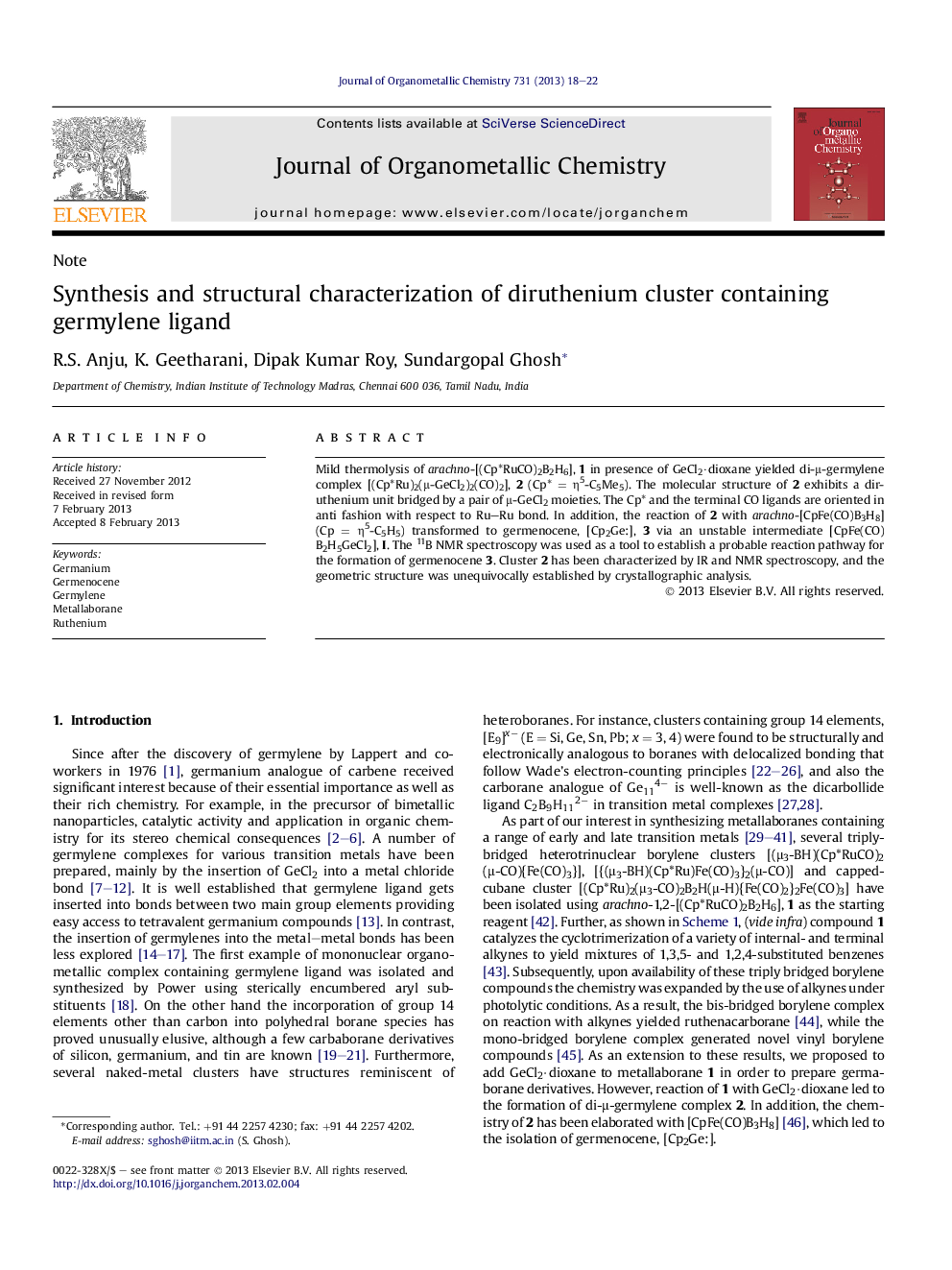| Article ID | Journal | Published Year | Pages | File Type |
|---|---|---|---|---|
| 1321880 | Journal of Organometallic Chemistry | 2013 | 5 Pages |
Mild thermolysis of arachno-[(Cp*RuCO)2B2H6], 1 in presence of GeCl2·dioxane yielded di-μ-germylene complex [(Cp*Ru)2(μ-GeCl2)2(CO)2], 2 (Cp* = η5-C5Me5). The molecular structure of 2 exhibits a diruthenium unit bridged by a pair of μ-GeCl2 moieties. The Cp* and the terminal CO ligands are oriented in anti fashion with respect to Ru–Ru bond. In addition, the reaction of 2 with arachno-[CpFe(CO)B3H8] (Cp = η5-C5H5) transformed to germenocene, [Cp2Ge:], 3 via an unstable intermediate [CpFe(CO)B2H5GeCl2], I. The 11B NMR spectroscopy was used as a tool to establish a probable reaction pathway for the formation of germenocene 3. Cluster 2 has been characterized by IR and NMR spectroscopy, and the geometric structure was unequivocally established by crystallographic analysis.
Graphical abstractThermal reaction of a arachno-[(Cp*RuCO)2B2H6] with GeCl2·dioxane yielded di-μ-germylene diruthenium complex [(Cp*Ru)2(μ-GeCl2)2(CO)2].Figure optionsDownload full-size imageDownload as PowerPoint slideHighlights► Formation of the ruthenium carbonyl cluster containing germylene ligand from ruthenaborane has been described. ► A strongly distorted tetrahedral environment of the germanium atom has been observed. ► Results highlight the possibility to synthesize a new class of metallagermaboranes.
